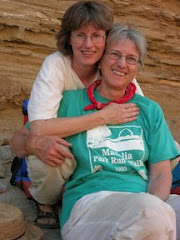 Great Britain is way ahead of the United States, when it comes to green burial practices. Dotting the countryside from Devon to Yorkshire are 240 green cemeteries, free of toxic embalming fluids, metal coffins, and concrete vaults.
Great Britain is way ahead of the United States, when it comes to green burial practices. Dotting the countryside from Devon to Yorkshire are 240 green cemeteries, free of toxic embalming fluids, metal coffins, and concrete vaults.For twenty years The Natural Death Centre has educated British consumers about funeral choices outside the mainstream. NDC, which helped create the network of English woodland burial sites and runs the Association of Natural Burial Grounds, believes that “death lies at the heart of our humanity . . . and that if we so wish, we [can] face it on our own terms without the mediation of a doctor, priest or funeral director.”
The Natural Death Centre plans to investigate “new technologies to replace gas cremators, . . . to increase the dialogue between palliative care and the funeral industry, to assist our colleagues in other countries to achieve what the NDC has achieved, to hold the spiritual middle ground between fundamental religion and fundamental atheism and to continue to challenge the taboos surrounding death.” I love this vision for the future of the home funeral/green burial movement.
 In the US, organizations like the Funeral Consumers Alliance and the Green Burial Council are infusing a new ethic into the funeral industry, one rooted in transparency, accountability, and ecological responsibility.
In the US, organizations like the Funeral Consumers Alliance and the Green Burial Council are infusing a new ethic into the funeral industry, one rooted in transparency, accountability, and ecological responsibility.A recent example of an eco-funeral was that of Oscar-nominated actress Lynn Redgrave, who requested a bamboo coffin made by the British Fair Trade company, Ecoffins. Bamboo, unlike regular wood, is highly sustainable; it regenerates rapidly after harvesting -- no replanting necessary. Ecoffins made from bamboo, willow, banana leaf, and pine are available in the US from Final Footprint, the company that provided Lynn Redgrave’s coffin, pictured above ($420 plus delivery).
In Minneapolis, there will be a free screening of an award-winning documentary film about the conscious death and inspiring home funeral of an environmental activist August 25 at Southdale Public Library at 7pm. At his request, Jack Heckelman’s plain pine coffin was built by his niece. For more details, visit the Minnesota Threshold Network blog.
Photo of Redgrave by Annabel Clark, http://www.redgrave.com/

 “Kids, look, there’s the cemetery where we would stop when I was a girl."
“Kids, look, there’s the cemetery where we would stop when I was a girl."

 No matter which way you want to go, those who will make decisions for you should know your final wishes. Put your instructions in writing. Discuss them with your family and friends. A funeral directive can be part of your Health Care Directive, which we all should have. There are free downloadable forms on line. One that we like, “Five Wishes,” is comprehensive and walks step by step through excellent questions. It’s available
No matter which way you want to go, those who will make decisions for you should know your final wishes. Put your instructions in writing. Discuss them with your family and friends. A funeral directive can be part of your Health Care Directive, which we all should have. There are free downloadable forms on line. One that we like, “Five Wishes,” is comprehensive and walks step by step through excellent questions. It’s available 
